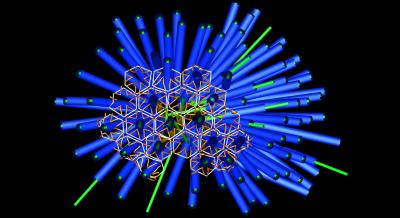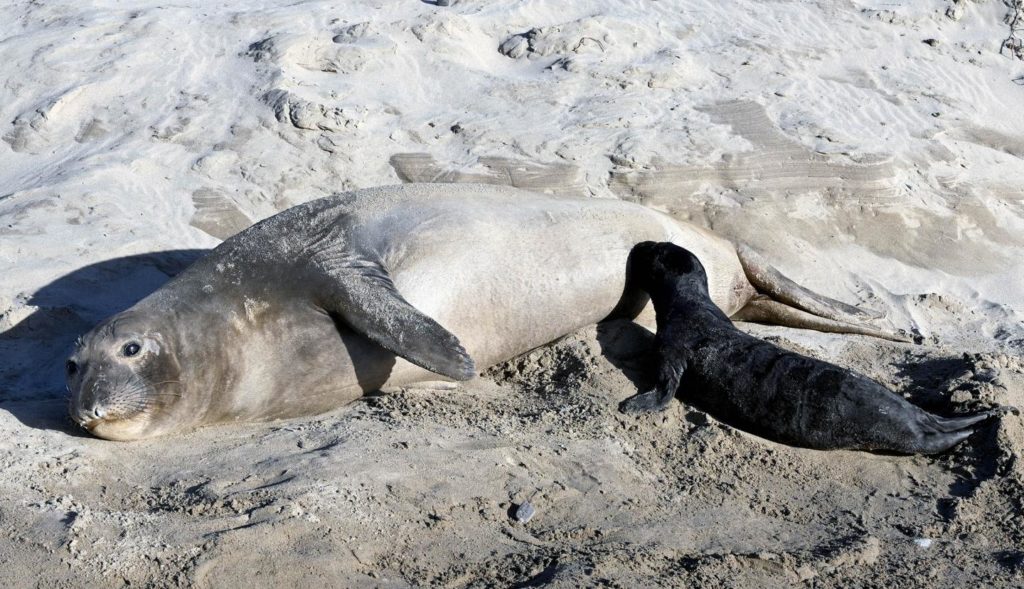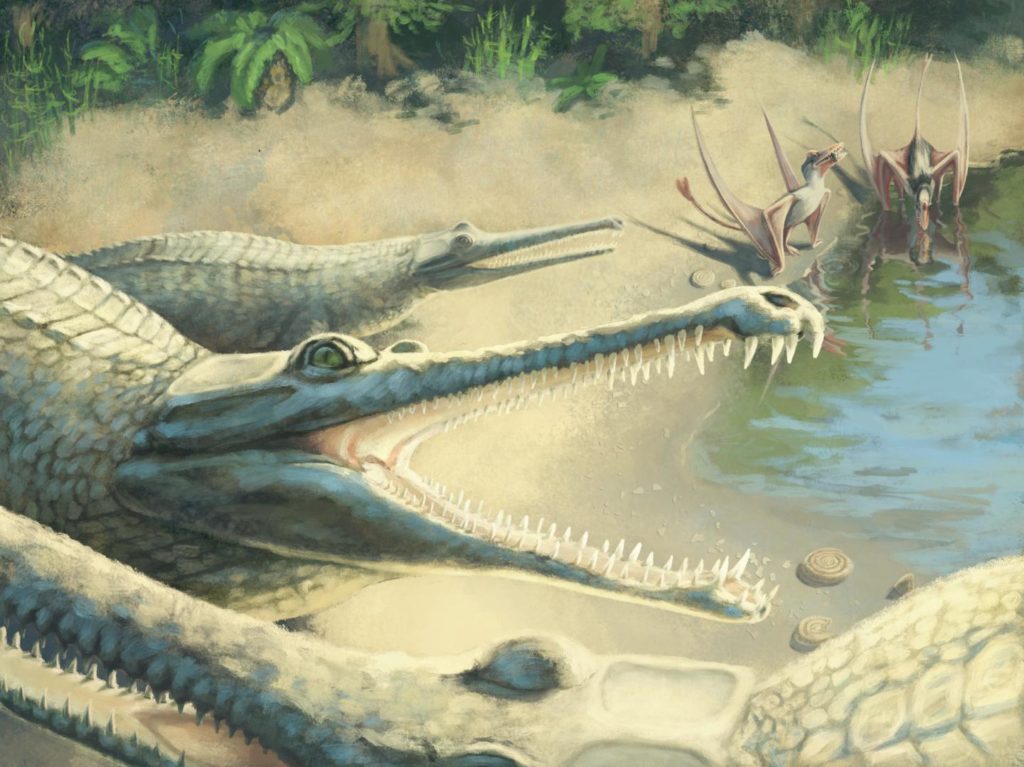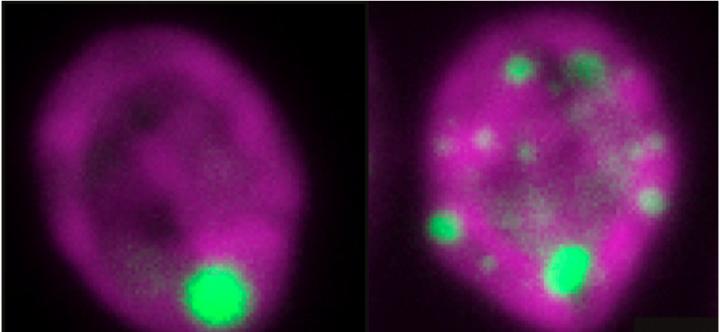A survey of the shark skin microbiome provides the first step toward understanding the remarkable resilience of shark wounds to infection. In the wild, blacktip reef sharks are often seen bearing wounds, but they rarely exhibit obvious signs of infection…
Tag: MARINE/FRESHWATER BIOLOGY
Invasive species short-circuiting benefits from mercury reduction in the Great Lakes
MADISON – According to a new study published today [Nov. 4, 2019] in the Proceedings of the National Academy of Sciences , 40 years of reduced mercury use, emissions, and loading in the Great Lakes region have largely not produced…
Zebrafish study reveals developmental mechanisms of eye movement
Fralin Biomedical Research Institute leads multi-university team in neuroscience study
Microrobots clean up radioactive waste (video)
According to some experts, nuclear power holds great promise for meeting the world’s growing energy demands without generating greenhouse gases. But scientists need to find a way to remove radioactive isotopes, both from wastewater generated by nuclear power plants and…
By cutting out one gene, researchers remove a tadpole’s ability to regenerate
Tadpoles of frogs that can typically regrow amputated tails or limbs lost their ability to regenerate after researchers blocked the expression of a newly identified gene that is one of the drivers for this regrowth. Furthermore, scientists hypothesize that the…
Are humans changing animal genetic diversity worldwide?
The loss of genetic diversity will hinder the ability of plant and animal populations to adapt to changing environments
The composition of species is changing in ecosystems across the globe
Researchers map types and rates of biodiversity change
Newly discovered microbes band together, ‘flip out’
When researchers in Nicole King ‘s lab looked through a microscope at the strange organisms they had collected in Curaçao, they saw sheets of cells clustered together in a pattern that resembled skin. That was unusual enough, since these unicellular…
Parasite paralysis: A new way to fight schistosomiasis?
MADISON — Scientists at the Morgridge Institute for Research have isolated a natural chemical that acts as a potent kryptonite against schistosomes, the parasitic worms that burrow through human skin and cause devastating health problems. A research team led by…
Researchers leverage new grant to benefit climate, cows
New England scientists will test algae for dietary supplements to decrease methane emission by cattle
What gives a 3-meter-long Amazonian fish some of the toughest scales on Earth
Arapaima gigas is a big fish in a bigger river full of piranhas, but that doesn’t mean it’s an easy meal. The freshwater giant has evolved armor-like scales that can deform, but do not tear or crack, when a piranha–which…
Human medicines affect fish behavior
Human medicines that act on important signal systems in the brain make fish bolder, shows a new study on three-spined sticklebacks by researchers at Linköping University. The results reinforce that the signal substances serotonin and dopamine play important roles in…
Many cooks don’t spoil the broth: Manifold symbionts prepare the host for any eventuality
Deep-sea mussels harbor up to 16 different strains of bacteria in their gills, keeping them prepared for environmental changes
Reclamation awards $8.9 million for innovative solutions in water and power management
The Bureau of Reclamation is providing $8.9 million to 27 new research projects and 114 continuing research projects through its Science and Technology Program. The funding from Reclamation is being matched by $10.9 million in partner contributions. The research findings…
Startled fish escape using several distinct neuronal circuits
A fast knee-jerk “ballistic” escape response and a more considered “delayed” escape response are mediated by distinct and parallel neuronal pathways in zebrafish, according to a study published October 15 in the open-access journal PLOS Biology by Harold Burgess of…
OCEANS 2019 Seattle highlights marine technology science and engineering
More than 300 research papers and posters will be presented at OCEANS 2019 Seattle, October 27 through 31, 2019, at the Washington State Convention Center. Seattle’s unique history of forward-thinking ocean research and technology, leadership in and focus on the…
Right whale mothers ‘whisper’ to their calves to avoid attracting predators
DURHAM, N.C. — As new moms, North Atlantic right whales tone down their underwater vocalizations and “whisper” to their young calves to avoid attracting predators, a new study by scientists at Syracuse University, Duke University and NOAA Fisheries’ Northeast Fisheries…
The deeper these octopuses live, the wartier their skin
Deep beneath the ocean’s surface, surprisingly cute warty pink octopuses creep along the seafloor. But not all these octopuses look alike. While we humans love a good “Is your skin oily, dry, or combination?” quiz, members of one octopus species…
The 11th International Conference on High Pressure Bioscience and Biotechnology
The increasing demand of sustainable and natural food products is booming the awareness of alternative processing technologies. At the Department of Food Science at the University of Copenhagen we are therefore glad to host the 11th HPBB2020 conference
The cholera bacterium can steal up to 150 genes in one go
In 2015, EPFL researchers led by Melanie Blokesch published a seminal paper in Science showing that the bacterium responsible for cholera, Vibrio cholerae , uses a spring-loaded spear to literally stab neighboring bacteria and steal their DNA. They identified the…
Researchers find antibiotic resistant genes prevalent in groundwater
Scholars warn attention needed to make wastewater potable and ensure public safety nationwide against emerging threat of antibiotic resistance
Anesthetizing fish may affect research outcomes
Anesthetics may alter coloration in certain fish species, influencing the traits researchers are trying to study
Seagrass meadows harbor wildlife for centuries, highlighting need for conservation
Seagrass meadows put down deep roots, persisting in the same spot for hundreds and possibly thousands of years, a new study shows. Seagrasses, crucial sources of shelter and food for thousands of species, are threatened globally by coastal development, pollution…
Warming impedes a coral defense, but hungry fish enhance it
Corals create potions that fight bacterial attackers, but warming appears to tip the scales against the potions as they battle a bacterium common in coral bleaching, according to a new study. Reef conservation may offer hope: A particular potion, gathered…
Predators and hidey-holes are good for reef fish populations
New research highlights two factors that play a critical role in supporting reef fish populations and – ultimately – creating conditions that are more favorable for the growth of both coral reefs and seagrass. “Previous work has shown mixed results…
How sustainable is tuna? New global catch database exposes dangerous fishing trends
Appearing in everything from sushi rolls to sandwiches, tuna are among the world’s favourite fish. But are our current tuna fishing habits sustainable? Probably not, according to a new global database of tuna catches created by researchers at the University…
Bacteria bullets target toxic algae
UD invention provides natural approach to combat harmful red tide algae
Protozoans and pathogens make for an infectious mix
Single celled organisms in the environment are protecting pathogenic bacteria and priming them for human infection, an international team of researchers has discovered
The hidden ark: How a grassroots initiative can help save fish from extinction
A new study shows that aquarium hobbyists can play an important role in freshwater fish conservation by filling in the gaps left by the scientific community and conservation organizations
Jellyfish’s ‘superpowers’ gained through cellular mechanism
Jellyfish are animals that possess the unique ability to regenerate body parts. A team of Japanese scientists has now revealed the cellular mechanisms that give jellyfish these remarkable “superpowers.” Their findings were published on August 26, 2019 in PeerJ .…
Cracking how ‘water bears’ survive the extremes
Researchers discover that a protein in tiny tardigrades binds and forms a protective cloud against extreme survival threats such as radiation damage
New research puts Australia at forefront of blue carbon economy
In world-first research, Edith Cowan University researchers and an international team of collaborators have accurately quantified the amount of greenhouse gasses — or ‘blue carbon’ — being absorbed and emitted by Australian marine ecosystems
Fish fathers exhibit signatures of ‘baby brain’ that may facilitate parental care behavior
Many new parents are familiar with terms like “baby brain” or “mommy brain” that hint at an unavoidable decline in cognitive function associated with the hormonal changes of pregnancy, childbirth, and maternal caregiving. A new study of parental care in…
German fishermen’s scepticism towards EU impedes compliance with its regulations
Game of chance experiment: In a relationship with an unpopular regulator, the truth is somewhat elastic
Underwater manatee chatter may aid in their conservation
Listening in on manatee conversations could help restore populations of this endangered marine mammal. Each manatee has its own voice: their calls can be traced back to specific individuals, offering a way to estimate how many of them are present…
Longest coral reef survey to date reveals major changes in Australia’s Great Barrier Reef
Marine biologist Prof. Maoz Fine: ‘Following in the footsteps of the pioneers of coral reef biology and ecology was an inspirational experience’
For this ocean dweller, ability to respond to warming waters is about location
It’s common knowledge that, through the process of natural selection, organisms adapt to their environments. But what happens when there are no barriers to gene flow and organisms are free-floating between extremely variable environmental conditions? A new study by UConn…
Study champions inland fisheries as rural nutrition hero
Synthesizing new data and assessment methods is showing how freshwater fish is an invisible superhero in the global challenge to feed poor rural populations in many areas of the world. But there’s a problem: Invisibility is the wrong superpower. Researchers…
Viruses as modulators of interactions in marine ecosystems
GEOMAR scientists show a new picture of the role of viruses in the ocean
Private boats in the Mediterranean have extremely high potential to spread alien species
This is the first study in the Mediterranean to combine boat and marina sampling data with crew surveys to better understand the role these boats play in spreading alien species. The researchers from the University of Pavia, Italy found that…
Micronutrients ‘slipping through the hands’ of malnourished people
Millions of people across the globe are suffering from malnutrition despite some of the most nutritious fish species in the world being caught near their homes, according to new research published in Nature today. Scientists from the ARC Centre of…
New species of crocodile discovered in museum collections
Crocodylus halli named after late scientist who started investigating the reptile’s lineage
Bacteria make pearl chains
With elegant appendages, the bacteria increase their surface area and thus improve their food intake
Genes ‘lost’ in whales and dolphins helped their ancestors transition to life underwater
Genes lost during the transition from land to water in cetaceans highlight genomic changes associated with aquatic adaptations
Department of Energy picks Carnegie Mellon and NAWI to lead Energy-Water Desalination Hub
Carnegie Mellon’s College of Engineering has been chosen to be part of the U.S. Department of Energy (DOE) Energy-Water Desalination Hub as a founding member of the National Alliance for Water Innovation (NAWI) . Civil and Environmental Engineering Professor Greg…
These pink sea urchins have teeth that sharpen themselves
Sea urchins have five teeth, each held by a separate jaw in a circular arrangement at the center of their spiked, spherical bodies. Now, researchers reporting in the journal Matter on September 18 have discovered how the teeth of the…

‘Death Star’ bacterial structures that inject proteins can be tapped to deliver drugs
Not all bacteria spread diseases, many are beneficial and this strain has nanoscale syringes that deliver proteins which cause metamorphosis in marine animals, and could be modified as a novel drug delivery tool for future vaccines and cancer care

Elephant seal ‘supermoms’ produce most of the population, study finds
High mortality rates for young elephant seals means long-lived females dominate the reproductive output of the population

Mysterious Jurassic crocodile identified 250 years after fossil find
A prehistoric crocodile that lived around 180 million years ago has been identified – almost 250 years after the discovery of it fossil remains. A fossil skull found in a Bavarian town in the 1770s has been recognised as the…

Princeton researchers explore how a carbon-fixing organelle forms via phase separation
A new study yields insights into how an organelle called the pyrenoid, which helps algae remove carb